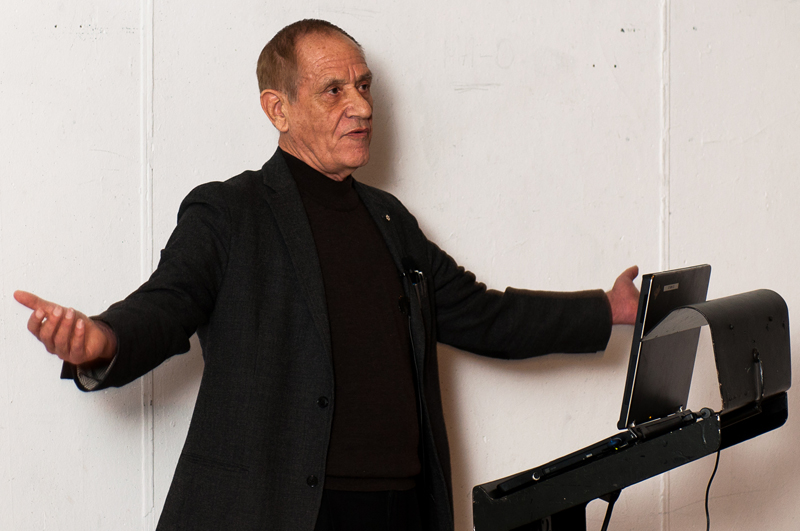
Carleton’s aboriginal student centre expansion should reflect the values of First Nations in its architecture, renowned architect Douglas Cardinal said during a discussion at the Azrieli School of Architecture & Urbanism Jan. 13.
The university announced Jan. 9 that Carleton will have a larger and more accessible aboriginal centre in place by Fall 2012.
When asked whether he will be involved in the design of Carleton’s newly announced expanded aboriginal centre, he said: “We’ll see how things evolve.”
Cardinal has a vision for the building, he said.
“I think it should reflect the world view, the values, the culture, the identity, the whole spiritual core of the First Nations community,” Cardinal said.
Cardinal is the architect behind the swooping arcs of the Canadian Museum of Civilization and a number of aboriginal student centres in universities across Canada. He is of Blackfoot, Métis and German heritage.
“He is a man split between two worlds [but Cardinal] has found a way to not only balance between the two cultures, but also to inform one world of reference of the other,” second-year master’s of architecture student Andrew Slade said in an email.
To express the aboriginal perspective, the design needs to show a connection with nature and most importantly, it must involve all members of the community so the building brings their vision into reality, Cardinal said.
“The event . . . was a great display showing how Cardinal carefully listens to the users of his buildings before he begins to design,” Slade said.
Cardinal goes through the process sometimes seven or eight times until there’s a consensus, Slade added.
Cardinal invited people to speak about what they want the centre to be like. Students gathered in a circle and passed around a stone describing their own vision one at a time. Their visions centered on the notion of comfort, or rather a means to connect them with their homes.
The space’s design is how we can start to engage the aboriginal community, Cardinal said.
Other more specific ideas focused on the importance of sharing food, spaces for ceremonies, talking circles and rooms for relaxation.
The aboriginal centre should not only serve the indigenous community but the rest of community as well, Cardinal said.
“It’s so important people have knowledge that has grown from the roots of the land. Their entire culture has grown out of every root and stone. And to be able to share the thousands of years of knowledge with the rest of the people is so fundamental,” he said.
Cardinal has a long-standing relationship with the Carleton community. In 1994, he received an honorary degree in architecture from Carleton. The university also houses his personal archive.
“I believe that architecture is a major player in shaping a societal consciousness and ultimately one of the most potent mediums of a collective identity,” Cardinal wrote.





